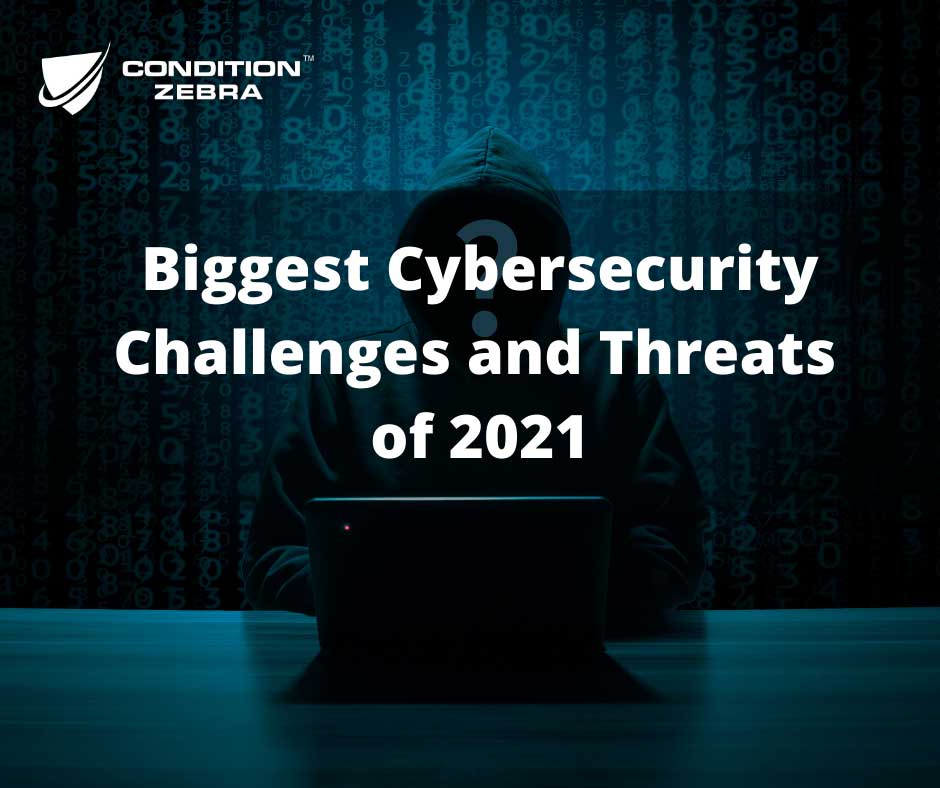Biggest Cybersecurity Challenges And Threats Of 2021
As 2020 turned out to be the year of all things virtual, enterprises and individuals bolstered their digital presence to sustain in an uncertain time. The world witnessed an unprecedented acceleration in digitization, e-commerce, and most importantly, remote working. In 2021, amid this continuing uncertainty, leveraging technology to create value and deliver value-added services become imperative. This strategic shift underlined the importance of enhancing cybersecurity to a new whole new level.
Take a look at the most critical cybersecurity challenges and threats that remain a concern for SME, MNC and Government agencies in 2021.
1) Remote workforce particularly at risk while posing a threat to the organization
Internal employees, intentionally or unintentionally, working away from a secure office network become a risk. There were too many incidents where data leaks by employees turned out to be very costly for businesses. Hence, the need for assessment and periodic review of safety infrastructure for an employee working away from office becomes necessary. Adopting the right software and network tools guarantee that sensitive business information stays safe when accessed remotely. A lesser protected network is a potential threat vector.
2) Developed threats of malware and ransomware attacks
The known devils of ransomware, malware, virus, and phishing mail will withstand the test of time. The outlook for 2021 offers little to cheer for. Personally, detailed and custom-made, these threats will grow into something even more malicious. Increased focus on automation only adds to the trouble. Malware campaigns and social engineering scams will fool even the smartest of victims as cybercriminals aim to fine-tune their offensive until they manage to perpetrate the most lucrative assault.
3) Cloud security posture management: the endless possibilities of cloud attacks
Cloud applications are wildly popular for their versatility. This dynamic structure requires an automated, updated DevSecOps security. The challenging task is securing a public cloud when you don’t have a strategy to establish policy uniformity across multiple cloud security approaches. When a change is required, IT security service providers and cloud service providers regularly need to review their security procedures and policies.
Free alternatives to professional cloud solutions including free containers, storage, and server applications are the primary targets of malicious actors. Compromising any one segment of the framework will expose the organizational downstream that ultimately leads to data breach and network infiltration.
4) Capacity building to deal with risk-based vulnerabilities
Cyber criminals are having a field day using our modernized and computerized critical infrastructures for their gain. Think transportation systems, electrical grids, water treatment systems, posing as some of the major vulnerabilities going forward. Businesses must take note of the existent exploitable vulnerabilities and assets. The real organizational risks can be measured by understanding the threats. Bulk assessment of the risks, risk intelligence, attacker activities, the criticality of internal assets – all this appraisal will help provide a detailed view of the real organizational risks facing your business.
5) Domain authentication
Made-to-order cyber-attacks combine data collated from social media, company websites, and hacked individual systems. As organizations increasingly utilize email service as the sole verification source and users at the receiving end find it tough to determine the real from fake messages. A holistic email security approach must include DMARC authentication policy. The ‘Domain-Based Message Authentication, Reporting, and Conformance’ or DMARC offer an extra layer of verification and trust along with the domain of a sender. This also helps address the growing menace of domain spoofing.
6) Improved VPN infrastructure
Trust enhancement and user experience improvement are two key aspects of remote work. VPN infrastructure is the best solution to safeguard your workforce from outside threats. Offering one of the most trusted security solutions, VPN offers a safe haven for a distant workforce that is always under threat.
Final Thought
This paradigm shift toward remote work and end-to-end digitization poses a bigger threat for businesses – compromised cybersecurity. In a constantly evolving security landscape, organizations must take proactive steps to stay ahead of the game and reduce the risk.
At Condition Zebra, we understand the inherent risks faced by enterprises in an unpredictable environment. We provide business-specific digital forensics, penetration testing, managed detection and response, and system hardening solutions. Our solutions are designed to deliver precise and targeted solutions for a host of cybersecurity and risk management solutions.
We are offering FREE Penetration Testing limited time offer, learn more here:
Click here to Claim your FREE Pentest
Lastly, we have adapted to provide Online Training Class to cope with the challenging pandemic times since July last year and continuing in 2021. This training includes additional mentoring sessions are crafted to help IT professionals, to hone their skills.
Learn about our Training:

